
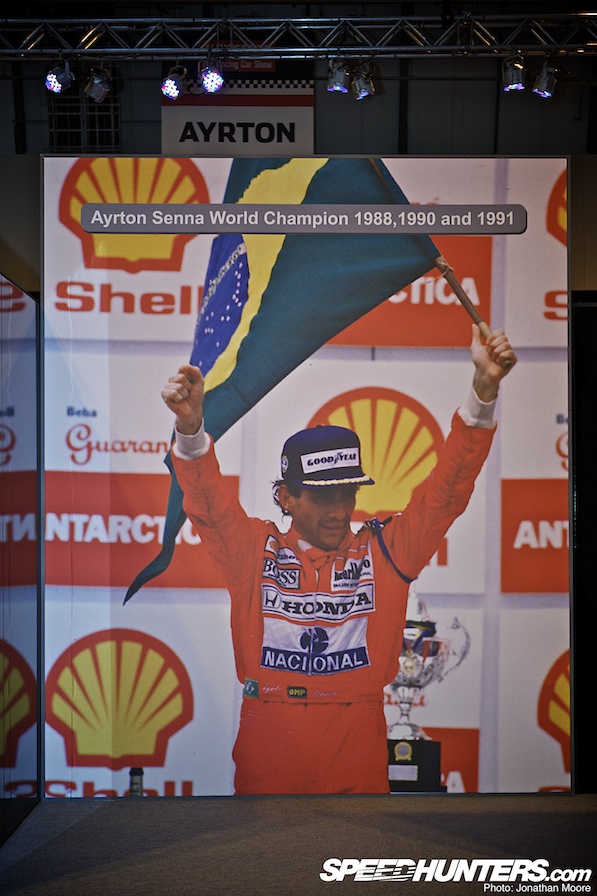
Ayrton Senna. A name that still reverberates around the modern era of Formula 1 – a hero to even some contemporary Grand Prix drivers, but a villain to others. The release of the award-winning Senna documentary last year has brought his name back into the headlines, and given everyone a chance to relive his career through the film.
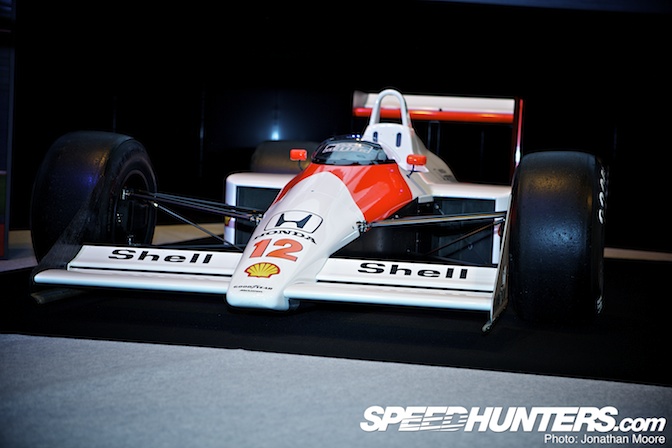
The Autosport International Racing Car Show at the Birmingham NEC provided an opportunity to see some of his cars in the flesh: a dedicated exhibition area was bolstered by several other cars with a Senna connection on show around the halls.
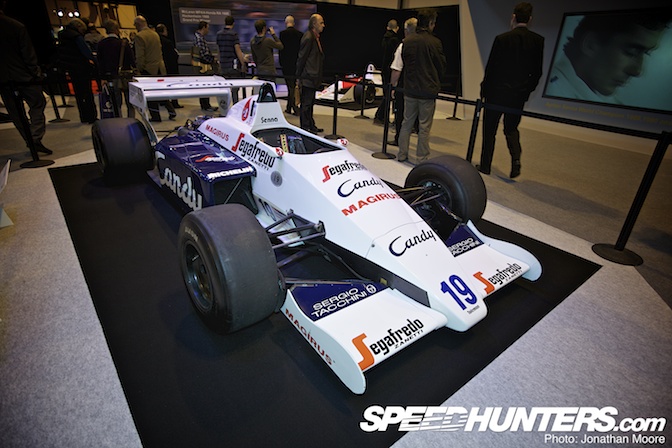
Senna didn't always have the fastest machinery – but was clearly able to display his talent even in the early stages of his career, at times making average cars seem great.
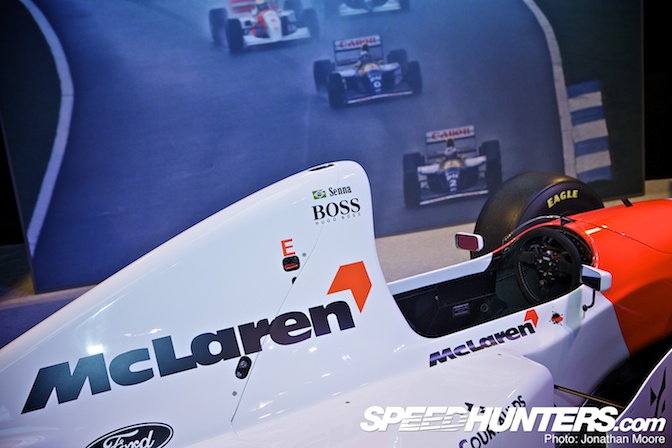
His legacy is as strong now as it ever was: there are corners on tracks around the world named after him, and Senna-branded shirts can be seen at any motorsport event you go to. It's easy to forget that he was just 34 when he died at the Imola circuit, a triple-world champion.
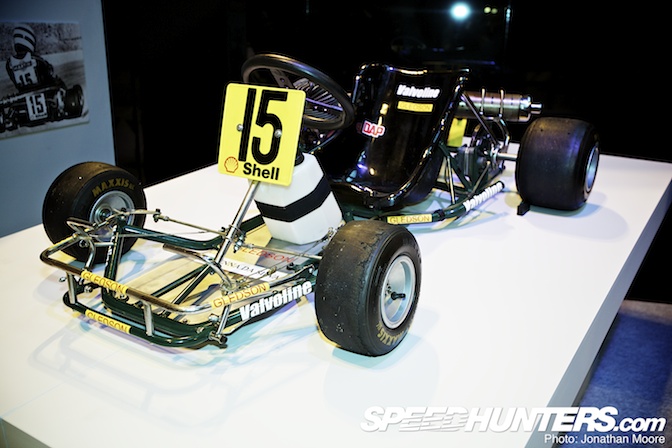
This is the DAP/Parilla go-kart that Senna raced in to runner-up position in the 1979 World Inter category held at Estoril in Portugal. He'd driven his first kart at just four years old, and started racing at 10. Senna flew out to Estoril a month early to test all possible permutations of engine and chassis. It was the first time Senna was favourite – and he duly took the lead at the start, increased his margin as the race progressed and took the chequered flag as victor. Or not – the overall result also took into account the two qualifying races, which dropped Senna to second in the final reckoning. He 'could not deal with the injustice' – a flavour of things to come.
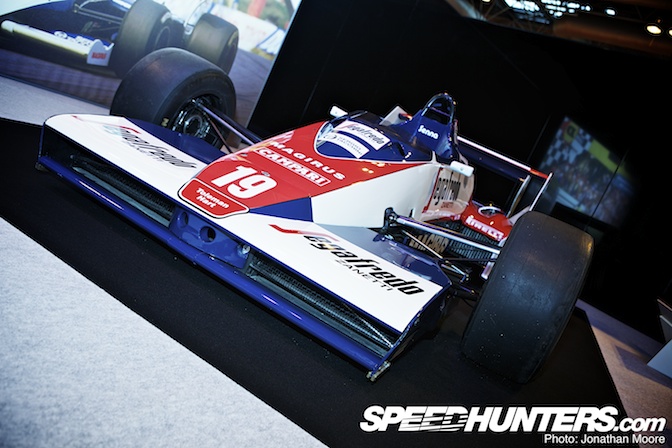
The earliest Formula 1 car on display at Autosport that Senna drove was the 1984 Toleman TG183B-Hart 415T. Designed by Rory Byrne and John Gentry, the 540kg car featured a carbon monocoque with wishbone and pull-rod suspension and Koni shocks. Lockheed disk brakes were mounted in the 13×11.5 front and 13×17 rears, with rubber supplied by Pirelli. The aluminium block, 4-cylinder 1.5-litre turbo delivered 600bhp through a Toleman/Hewland five-speed box.
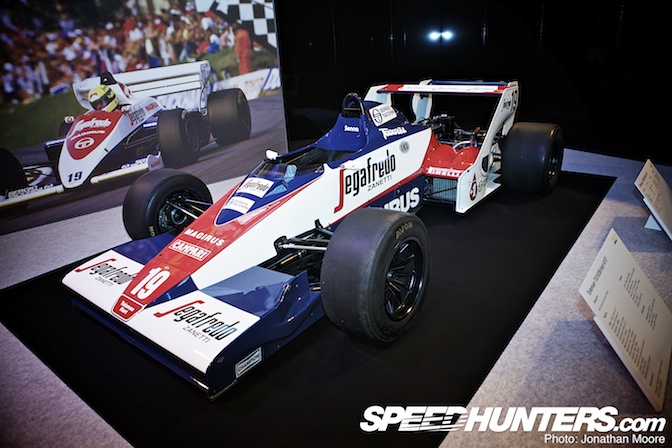
The TG183 was first raced at the end of the 1983 F1 season before a full-year assault in 1983 with the B-spec. With Senna signed for 1984 (after testing for several F1 outfits) and the new car/tyres combination not quite ready, Ayrton took the wheel of the TG183B for the first four races of the year. Things were hardly overwhelming in qualifying: 16th, 13 and 19th in Brazil, South Africa and Belgium respectively (a turbo failure caused retirement, then two sixth places, each several laps down, were the results in the races), and then he failed to even qualify in San Marino.
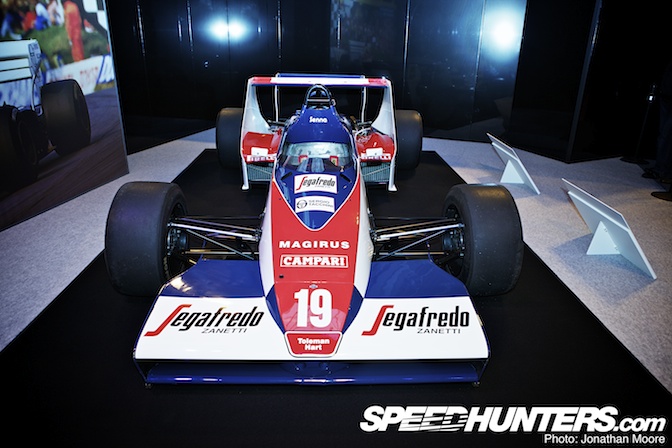
But this is one of my favourite-looking F1 cars: I remember being obsessed by the double rear wing assembly, to the extent of customising toy Polistil cars by sawing off parts from a Tyrrell, repainting it and adding a second wing made of card. Those were the days… Unfortunately the unique aesthetics of the car were also its failing: the front wing housed the radiators, and development problems meant that the front of the car moved around at high speed. Not exactly great for instilling confidence.
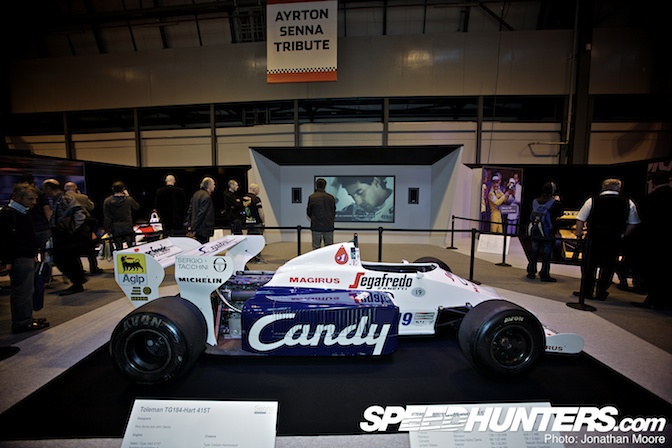
The TG184-Hart 415T used for the remainder of the 1984 season was another Byrne/Gentry design and used the same 415T 1.5-litre turbo as the 183B. It also retained the twin-wing approach from the TG183B, now further developed and believed to deliver better performance.
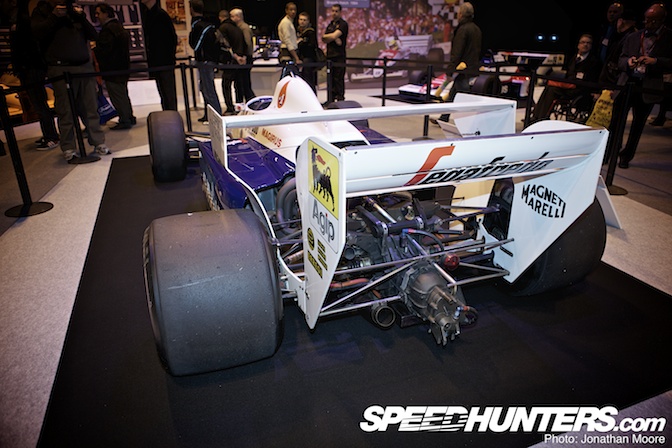
A problem with the car was that the Hart turbo engine was not designed as a load-bearing structure, and therefore required a separate sub-frame to be built around it – adding weight and negating the positive impact of the lightweight kevlar bodywork. Not only that, but the car suffered from terrible reliability – though when it did work Senna's magic hands did the job.
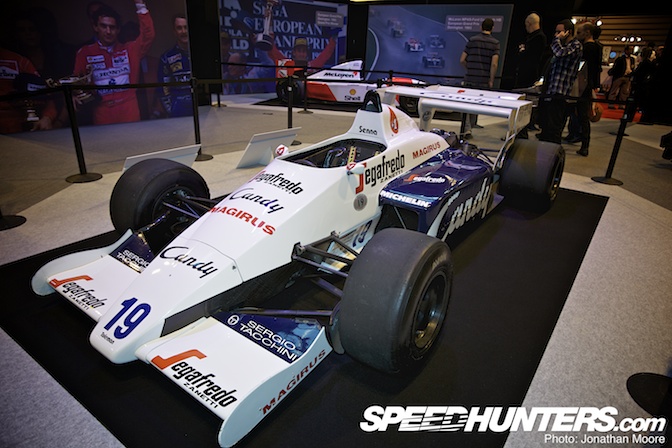
His most famous race that year was at a rain-soaked Monaco, where Senna came from 13th on the grid to within a whisker of winning. Having fought his way into the lead, the race was red flagged and he took the chequer, apparently to win. Prost's frantic waving to the officials and the protestations from his team about the monsoon conditions had contributed to the race being ended early, and the race result was counted back to the lap before Senna had taken the lead – he would have to settle for second, but notice was served that the young Brazilian had arrived.
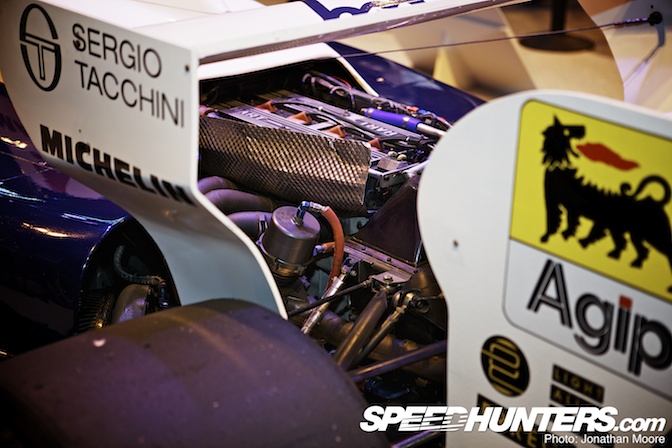
Senna achieved two more third places, at Brands Hatch and Estoril, plus a fastest lap – quite something in a car that was mid-grid at best. A seventh in Canada was the only other finish for Senna's Toleman: retired – turbo; retired – gearbox; retired – engine… Three accidents also didn't help.
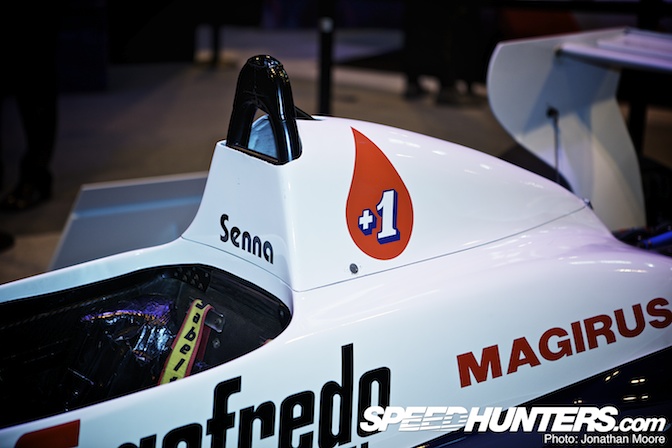
The car is infamous for starting the career of one young driver and ending another's – Senna's fellow Toleman driver Johnny Cecotto crashed his TG184 at Brands Hatch in the UK and was badly injured.
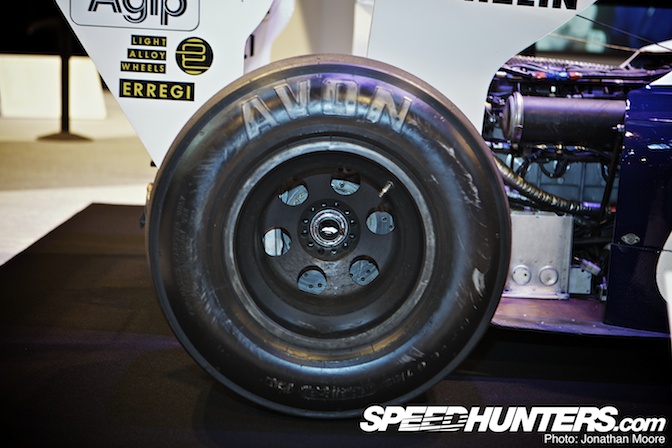
At the time a swap from Pirelli tyres to the Michelins of the leading teams was expected to bring another slug of performance to the team – the car now runs on Avons in historic races.
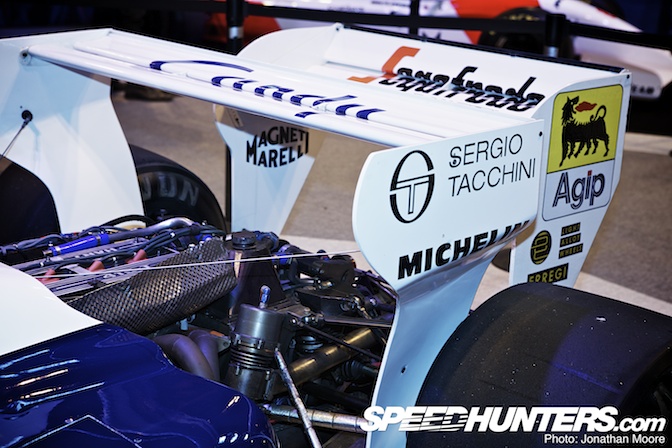
At the end of 1984 Senna bought out of his Toleman contract and made the switch to the Lotus team – the beginning of his inexorable rise to Grand Prix fame and success, which brings us onto the next car.
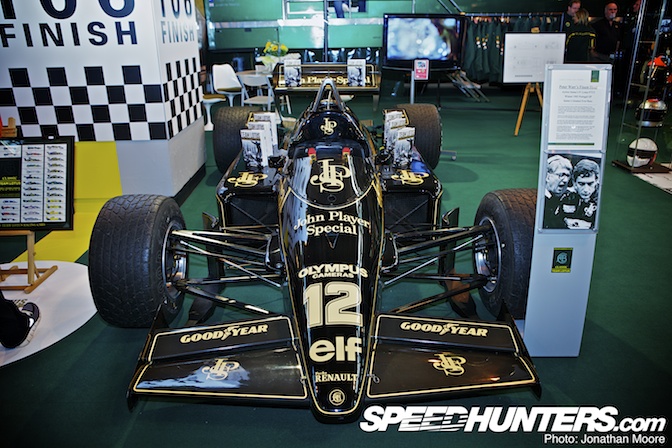
Moving out to the Classic Team Lotus stand in the main hall, we find the Lotus 97T/2 – Senna's winning car from the 1985 Portuguese Grand Prix, considered one of his greatest victories (Senna: "Donington? It was nothing. I had traction control"). The car is also seen as Lotus Team Manager Peter Warr's finest hour: he'd joined Lotus in 1958 and had overseen the team's world titles in 1970, 1972 and 1973. Warr then left the team, but rejoined in 1982 just before Colin Chapman's sudden death.
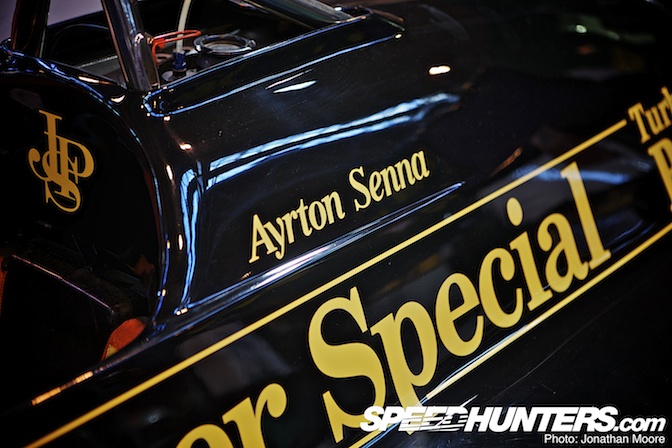
Warr took up Chapman's mantle and revitalised a team reeling from the death of their iconic leader. He drew in John Player Special sponsorship, secured an engine supply deal with Renault and most importantly signed Senna to drive for the team.
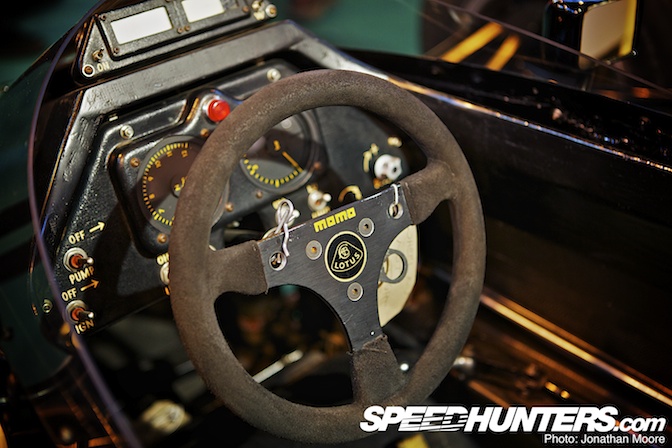
The 97T was designed by Gérard Ducarouge (another Warr signee) for the 1985 F1 season. It was a development of the 95T, and incorporated aero elements from the defunct 96T Indycar project. The 97T continued the tradition of Lotus design innovation: bargeboards being the trick that this car introduced.
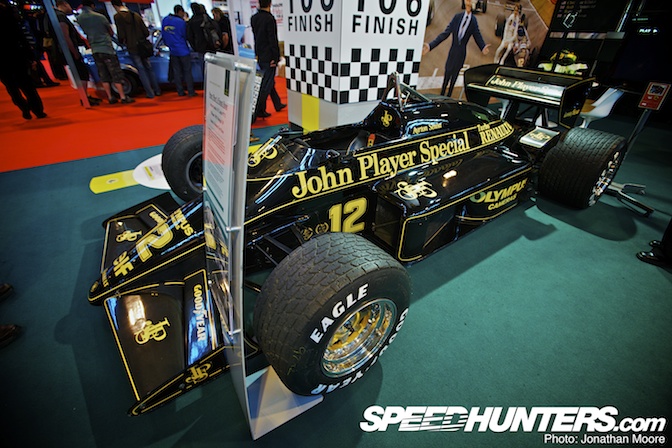
The 1.5-litre turbocharged 97T was fast – Senna partnered Italian Elio de Angelis for the season and between the pairing they scored eight pole positions (Senna seven, De Angelis one) and three wins (two to Senna). Unfortunately unreliability was the Lotus weakness, as ever: frequent retirements cost him any tilt at the title that year.
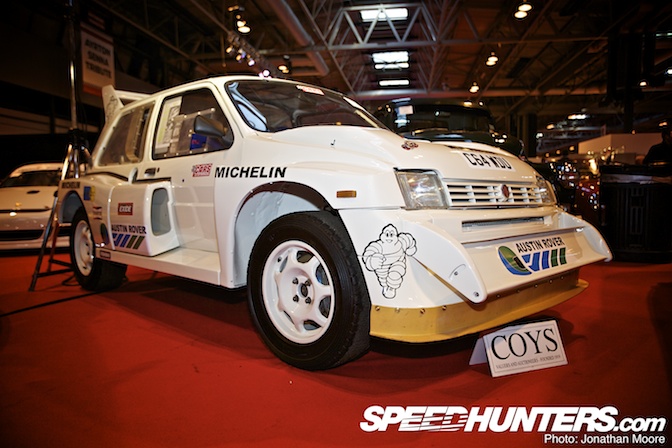
Now a brief bit of off-piste: tucked away in the Coys auction is a car less well-known to have a Senna connection. Formula 1 of course – the cars above are all well known for their Senna association. But aside from a 'celebrity' race in a Mercedes saloon and a one-off drive in a Porsche 956 Group C sportscar at the Nurburgring, who remembers this Metro?
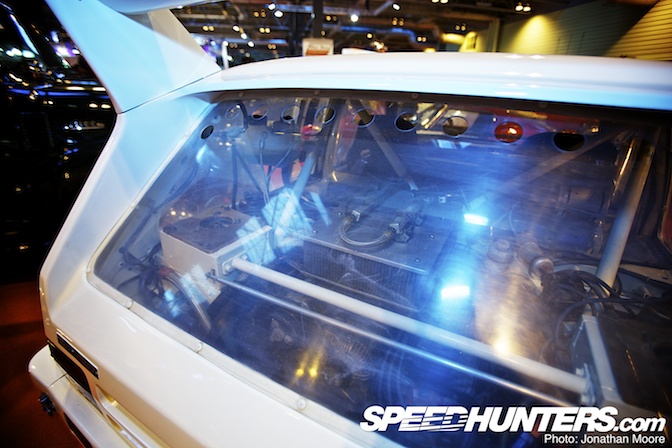
The car itself is a 1985 Group B 6R4, designed by Patrick Head and John Piper from the Williams Grand Prix team, with a 3-litre V6 crammed in behind the drivers seat – effectively taking up half the car. Road registered, C64 WDU was used as a testing and press car, so it's seen some action, but with Ayrton's name attached that's still likely to add a couple of zeros to the asking price.
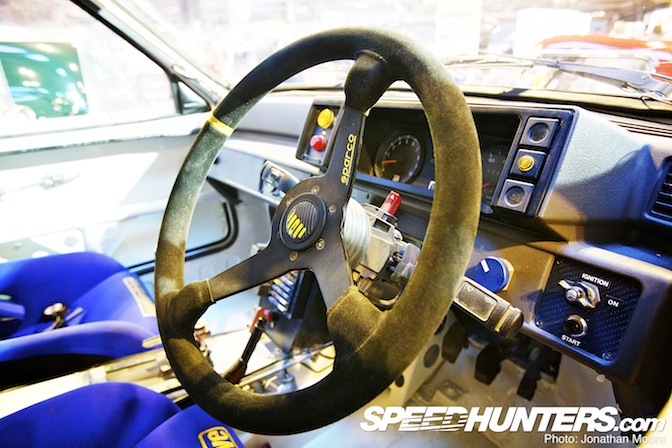
But yes, Senna drove this diminutive pocket rocket in 1986 – the reason was a test organised by a magazine, and the editor is surely even now still high-fiving himself for pulling this one off.
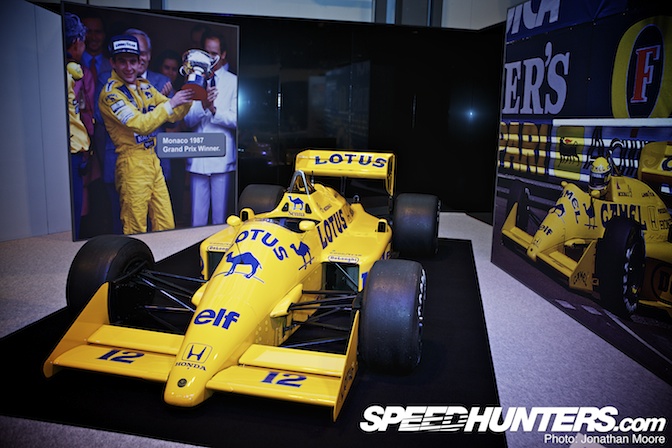
Back in the Senna exhibition is the Lotus 99T-Honda from the 1987 season. Lotus swapped to Honda power after Renault pulled out of F1 at the end of the 1986 season – the change was positive, as the Honda unit was reliable and immensely powerful. An existing relationship between Honda and Williams prevented Lotus from getting the latest spec engine, and Lotus had to take Satoru Nakajima as part of the engine supply deal, not exactly stretching his team-mate.
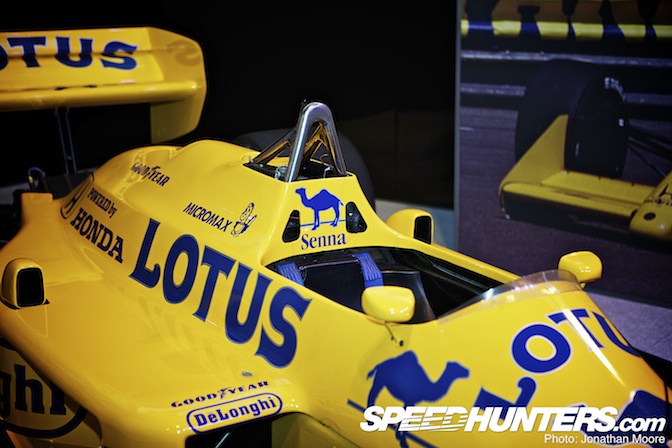
The 99T was the first active suspension car from Lotus, though that came with a weight penalty and and took a little off the turbo delivery. Still, a respectable 900-1,000bhp was available from the 1.5-litre V6. Senna dragged everything out of the car in the face of the dominant contenders from Williams and McLaren, and ended up third in the drivers' championship with two wins (Monaco and Detroit) and three fastest laps. The car suited the bumpy, challenging street circuits – as did the talents of the driver.
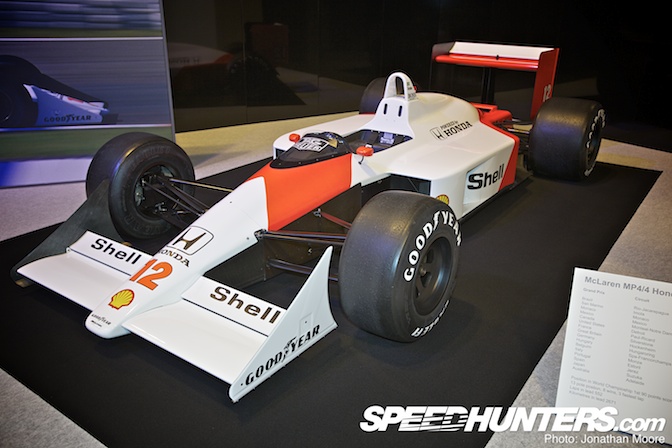
1988 and Senna's first World Championship. The car, the McLaren MP4/4 Honda, Gordon Murray's archetypal example of all that a Formula 1 car should be: beautiful, powerful and completely dominating. The turbocharged 1.5-litre Honda V6 was to be the last hurrah of the turbo era before a return to naturally-aspirated power in 1989. It delivered 'only' around 650hp in race trim, but it was how it delivered it that was important – and how it used fuel in a year of reduced tank size.
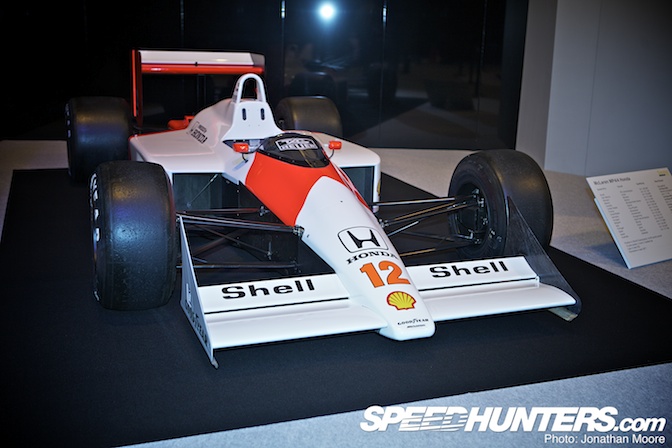
Winning was what this car did: 15 out of 16 races that year went to Woking and eight of those to Ayrton; the rest to Alain Prost. The wins might have been almost equal, but Senna excelled in qualifying, taking 13 pole positions during the year and sowing the seeds for the almighty rivalry between the two drivers over the coming years.
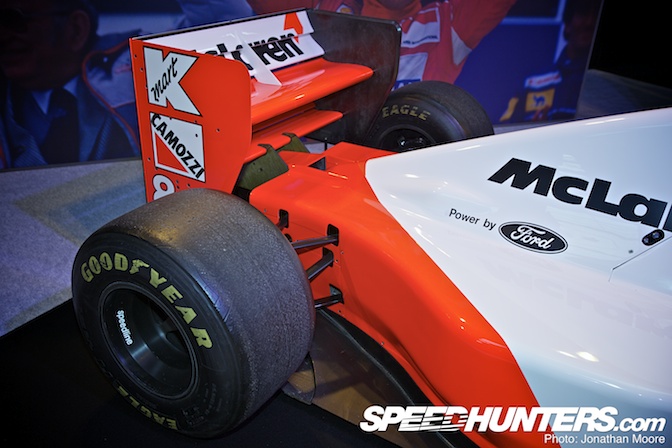
We now fast forward 1993's McLaren MP4/8, the youngest of the Senna cars to be found at the NEC. The '93 McLaren was powered by a 3.5-litre V8 Cosworth HB engine pushing out 700hp in a car weighing just 505kg.
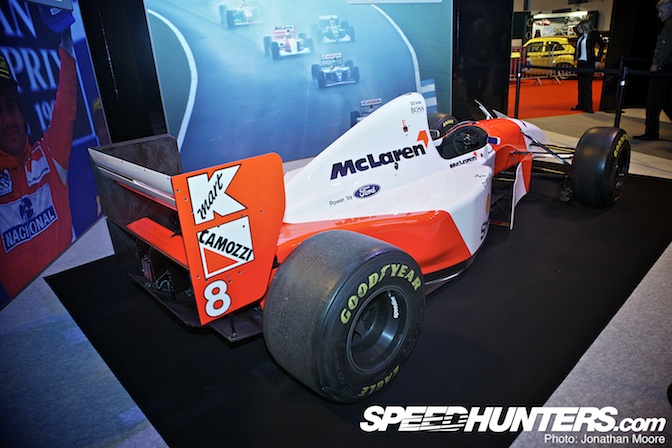
It was a transition year: McLaren had just lost the Honda engine supply deal and had switched to the trusted Ford unit amongst a marvellously varied grid of suppliers: V8s, V10s and V12s were spread across the grid, making it a lot more interesting than with today's prescribed regs. Senna signed on a race-by-race deal, racing with Michael Andretti and a young Mika Hakkinen during the year.
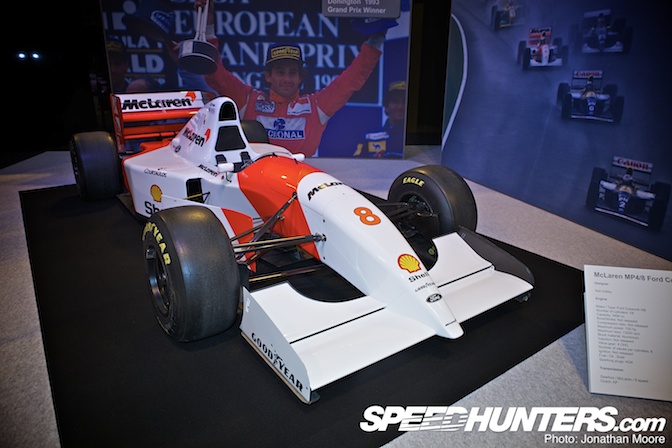
Senna took the MP4/8 to five race wins, in Brazil, Donington (that race), Monaco, Suzuka and Adelaide. This gave him second position behind Prost's dominant Williams in his final complete season before his untimely death at the 1994 San Marino Grand Prix.
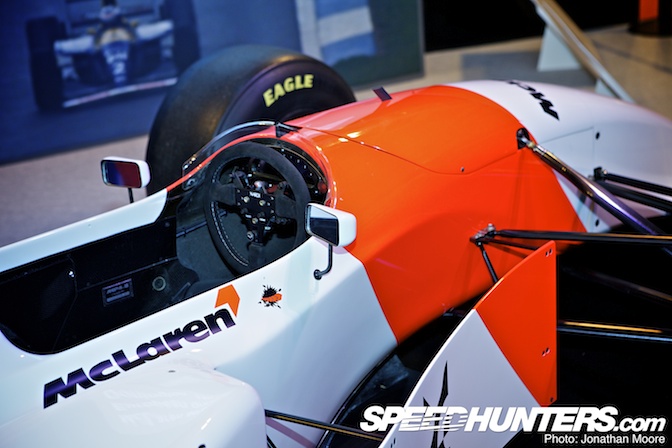
What I like about all these cars is the relative simplicity of the liveries and their graceful lines – so different from the over-complicated and sometimes fussy look of modern F1 cars. In conjunction with the charisma, passion and personalities of the drivers of the time they make for a glory period in F1. Like Schumacher, Senna is a driver who stirs up passion and argument in both his fans and critics about the nature of his talent – I was definitely a Prost fan as a kid! – but behind the wheel? Senna was king.
Jonathan Moore






A Tribute to a Legend who made his opponents make the decision when overtaking and cornering
Senna <3
Interesting article but I'd suggest someone proofreads it again and fixes a few issues....
So ironic, I just finished the Senna Documentary on Netflix last night.
Great, great article! More vintage racing och tech, less drifting please <3.
Ayrton Senna ficara no coração de todos os brasileiros que amam automobilismo um dos melhores pilotos que o mundo já teve!
Ayrton Senna had been at the heart of all Brazilians who love racing one of the best drivers the world has ever had!
Thanks for the article
OMG i cant belive i saw this with my own eyeballs!!!! i still cant belive the fact that i touched the same car that senna touched!!!!!
> < best moment of my life!
Damm...such a beautiful tribute. That Autosport event was full of history and gr8 memories. Fantastic report Jonathan
Past Formula One drivers can be divided in two categories: the ones remembered for what they won (Prost, Lauda, Stweart, Fangio..) and the ones remembered for how they won (Villeneuve, Mansell, Peterson, Guy Moll...).
Than there are just three exceptional cases that can be put in both categories: Nuvolari, Clark and Senna.
The kings of the kings
Great article! But you were a Prost fan as a kid?? eeewwww!
The liveries look simpler now on the older cars because the Tobacco ads have been removed
It's a shame McLaren has ruined the original "graceful liveries" by erasing the Marlboro brand name. All they've managed to do is desecrate the car as it originally raced.
Every time he got into a car, he was incredible!
Overrated, but still one of the greats
R.I.P, Ayrton Senna!! A legend
desculpe ae gringos .. mas o melhor piloto do mundo é brasileiro!!!1
sorry .. but the best pilot of the world is brazilian kkkk
Love the pictures and cars.
It is sad that we so easily re-write history as part of some political correct witch hunt and display the cars in some zero tobacco paint jobs!
I wish he drove the Porsche 956 for at least another event.
Rajan overratted how so 65 pole positions and three world championships. What have done in your lifetime?? Stop drinking haterorade....
awesome! i loved it.
Go find an old Honda engineer, he will tell u how much power that MP4/4 was putting down lolol it wasn't 650.
Senna never should have left for Williams! He would have been a champion for years to come if he stuck with McLaren... such a shame; he was the best!
Please people keep this place free of Senna fanboyism. It is not doing the man justice. Everytime I'm on youtube for my F1 fix there's at least one "Senna = only proper driver ever" comment that isn't constructive at all. I have huge respect for the driver. I also used to appreciate the myth he built through the way he talked and all, but getting older and doing some research on the sport revealed he isn't the end all be all of F1 drivers. He was pretty amazing on numerous occasions. Especially qualifying. But the best ever... The most annoying is when Senna fans belittle other / current drivers. Chaps like Alonso or Raikkonen are pretty damn impressive too in terms of raw talent. I'd like to conclude saying that a genuine F1 and motorsport fan finds passion in every driver's ability to do what they're doing, with their own way of doing it. A single person worship is ridiculous and useless.
Great article! I've got "Senna" ready to watch once I feel I'm ready.
Great post about Senna. I personally think that Senna is a driver that would've won championships in whatever race seires he entered.
O melhor dos melhores... Esta pra nascer alguém para superá-lo!!!
The best of the best!!
He had a really tough time... the organizers and heads of F1 didn´t like him, just because he was from south america, and yet.... he was THE BEST.
Even when he didn´t win, the show, just watching him drive... OMG.
And when in rain... OMFG, the guy made a car dance in water. The slippery, the better.
And just in F1 cars, he could drive anithing, anytime, anywhere
What a great man and performer. There´s been some serious drivers in this past years, but there´s no one like the top one from when i was just a kid... Mister Ayrton.
One of the highlights of the International Racing Car Show is always the Formula 1 Grid: a rare opportunity